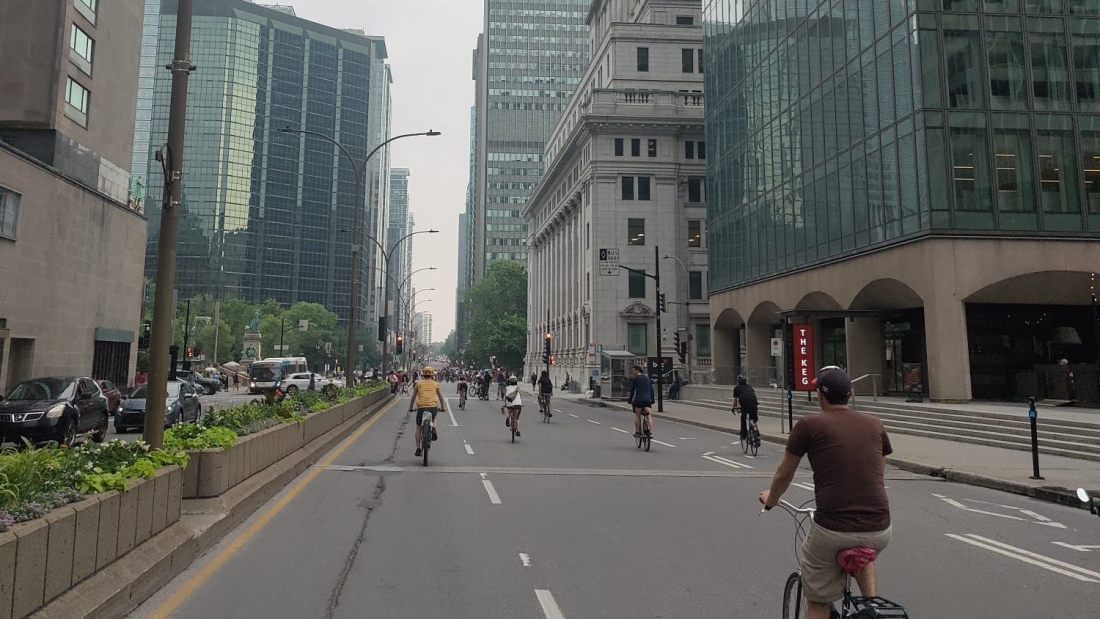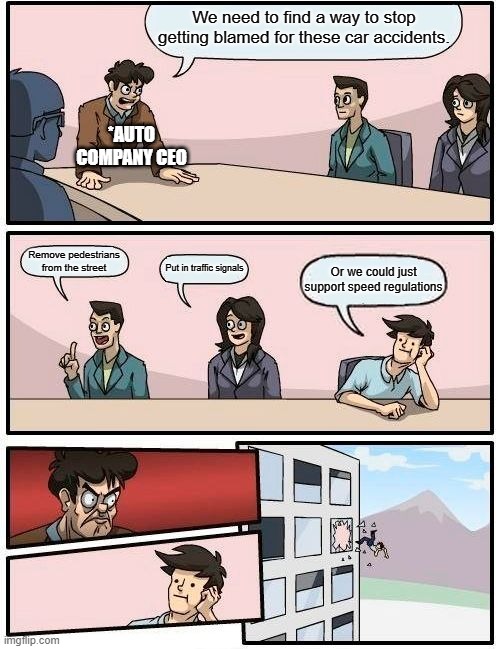Today, I want to discuss an insight I’ve stumbled upon: Crossing a street, especially a wide road, is fraught with fear. A fear we are conditioned to. Like all insights, it’s something that has always been in front of our eyes so I am likely not the first person to discover it.
Conditioning by cars
Roads have us pedestrians, cyclists and mobility vehicle users in a state of submission. Even on shared streets, we fawn to let cars by. We look out for and warn each other when an automobile is coming, despite the onus lying with the driver (an act of self preservation as we know drivers can and often do get off the hook for running over a pedestrian). We teach our kids early about the dangers of our city roads. We feel embarrassed to occupy space, to take a few extra seconds to cross an intersection without having to make a dash, to inconvenience cars ever so slightly. The only relatively safe space is inside a car. This is automobile hypernormalisation. (Can you tell that I have recently watched a certain documentary?)
How did we get conditioned into thinking of our roads as the Wild West? How did our public spaces end up as arenas of ruthless egotism, where every driver just aspires to cut the other off and get ahead, rather than a collective good like public safety? Did we mould our shared spaces into what capitalism asks of us in other modes of life, namely placing individual progress above everything else?
The invention of jaywalking
Our streets were not always so unfair. Before the automobile got so widespread, everyone on a street was on a more or less level footing. Once cars and other larger, faster vehicles came into use, the number of accidents they caused rose dramatically. That’s when the auto industry, faced with looming regulations, convinced us to shift the goalpost. Enter victim blaming.
We began to tell the victims of auto violence that they were themselves responsible for being run over, that they didn’t know how to cross the road. Vox’s 2015 article on the history of jaywalking and the one by Bloomberg before that explain how automakers invented the term “jaywalking” so they wouldn’t be blamed for the deaths caused by their products. Both articles discuss the ideas in Peter Norton’s book Fighting Traffic: The Dawn of the Motor Age in the American City.
In many countries, like India for instance, the concept of jaywalking does not formally exist and most streets can be traversed wherever we want, and not just on a crosswalk. From a Western driver’s perspective, this probably sounds like chaos but being forced to pay more attention or stop often could reduce accidents.
However, as the auto industry develops and demands more of the public realm, we can expect similar laws popping up there too. As with many other things, the American way of doing things will be imitated to great destruction before good sense dawns. Besides, an unfair, supremacy-based system – where a car owner’s space, time, and indeed worth is considered more important than that of a pedestrian or cart puller – fits well within a caste-segregated, hierarchical society that already understands these ideals too well. The road rage and bullying perpetrated by Indian car owners is proof.
Automobile realism and car brain studies
A lot of people can’t seem to fathom a world without cars. I first came across the term ‘automobile realism’, a concept derived from ‘capitalist realism’, in a video by Youtuber Adam Something. In the book Capitalist Realism, Mark Fischer describes the idea as “the widespread sense that not only is capitalism the only viable political and economic system, but also that it is now impossible even to imagine a coherent alternative to it.”.
I also stumbled upon a study from Montreal’s McGill University – Automobility realism: How the auto-dominated present constrains our imagined futures – by Paris Marx who looks into and questions solutions proposed by the tech industry, like Elon Musk’s Hyperloop or electric cars themselves. Marx went on to expand these ideas into the book, ‘Road to Nowhere: What Silicon Valley Gets Wrong about the Future of Transportation’. On a side note, I once worked on an electric car ad campaign at a time in my life when I naively believed that electric cars were a feasible climate solution. That was my car brain era.
The phenomenon referred to as “car brain” by livable city advocates is what three researchers from Swansea University, Wales – Ian Walker, Alan Tapp and Adrian Davis – call “motonormativity”. This concept is derived from heteronormativity, and in their popular study, they asked a set of nearly identical questions about behaviour and observed how differently people thought when cars entered the picture. For instance, one of the questions is on leaving objects in public spaces. People were asked if someone were to leave a personal object on the street and it were to get stolen or damaged, who would be responsible for it. Most people said it would be the person’s own fault. Yet, when the object was a car, people suddenly changed their mind. This is how pervasive car culture is.
For example, half were asked if they agreed:
“People shouldn’t drive in highly populated areas where other people have to breathe the car fumes”
and half got:
“People shouldn’t smoke in highly populated areas where other people have to breathe the cigarette fumes”
4/14
— Ian Walker (@ianwalker) January 17, 2023
Reclaiming our streets
Thankfully, automobile realism is not as bad as capitalist realism as many car-free examples exist. It is liberating to stand in the middle of a street (for as long as you like, and not a barely 15 second interval). In most places, this is something that can now only be done in the dead of the night, during a demonstration or in a lockdown. The monthly Critical Mass ride (Masse Critique in Montreal) is one such space. Riding as a group, we cordon off approaching car traffic giving everyone on bikes and other smaller mobility devices like unicycles total access to the street. When the fear of menacing cars is removed, you slow down and discover the beauty of our town centres and neighbourhoods. You get to reclaim the street.
For pedestrians, demonstrations like the solidarity marches for Palestine provide that feeling. In this case, the police block off the traffic, allowing the procession to move. Whether it’s the chance to meet and form connections with fellow humans or an effect of the endorphins released by cycling, you just feel happier when you have the street without any strings attached.
I urge you to try this out for yourself. Spend an afternoon in the pedestrianised area of your downtown, or even better, show up for a cause like Palestine, climate change or renter’s rights.
I’ll be back with more takes on making our public places more public, and general car culture-bashing soon. Stay tuned.


